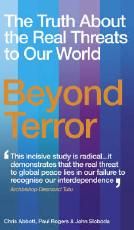Jul 31, 2007
Chinese nuclear sub shows up on Google Earth?
Posted by Ole Peter Galaasen in categories: defense, military, nuclear weapons

Increasingly, tools readily available on the Internet enable independent specialists or even members of the general public to do intelligence work that used to be the monopoly of agencies like the CIA, KGB, or MI6. Playing the role of an armchair James Bond, Hans K. Kristensen, a nuclear weapons specialist at the Federation of American Scientists (FAS) in Washington, D.C., recently drew attention to images on Google Earth of Chinese sites. Kristensen believes that the pictures shed light on China’s deployment of its second-generation of nuclear weapons systems: one appears to be a new ballistic missile submarine [see above image]; others may capture the replacement of liquid-fueled rockets with solid-fuel rockets at sites in north-central China, within range of ICBM fields in southern Russia.
Source: IEEE Spectrum. An excellent example of how open source intelligence outsmart military intelligence.
See also: Nuclear terrorism: the new day after from the Bulletin of Atomic Scientists. From the article:
Finally, there is the question of whether the U.S. government would behave with rational restraint. This, of course, assumes that there is a government. A terrorist nuclear attack on Washington could easily kill the president, vice president, much of Congress and the Supreme Court. But in a July 12 Washington Post op-ed, Norman Ornstein revealed that the federal government has refused to make contingency plans for its own nuclear decapitation, which means that U.S. nuclear weapons could be in the hands of small, enraged launch control teams with no clear line of authority above them. Assuming that the federal government was still there, however, we can only imagine (using the reaction to the loss of a mere two buildings on 9/11 as a metric of comparison) the public rage at the loss of a city and the intense, perhaps irresistible, pressure on the president to make someone, somewhere pay for this atrocity.









